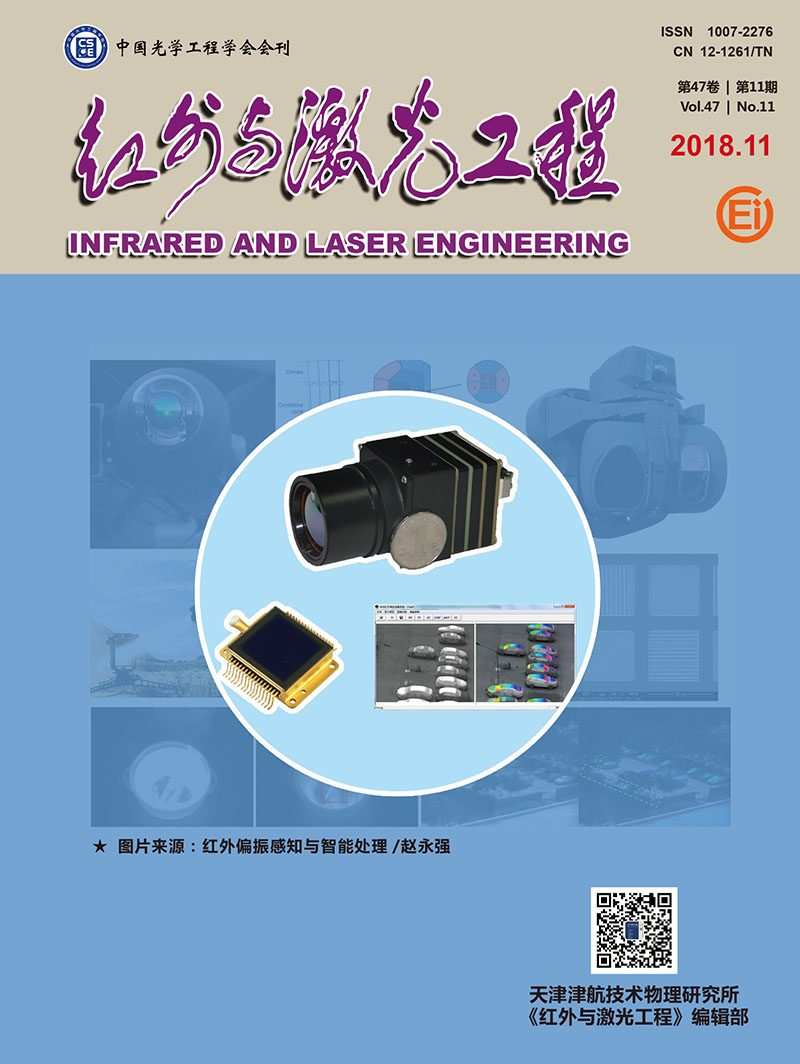|
[1]
|
Ferrari M. Cancer nanotechnology:opportunities and challenges[J]. Nat Rev Cancer, 2005, 5(3):161-171. |
|
[2]
|
Cheng L, Wang C, Feng L, et al. Functional nanomaterials for phototherapies of cancer[J]. Chemical Reviews, 2014, 114(21):10869-10939. |
|
[3]
|
Pitsillides C M, Joe E K, Wei X, et al. Selective cell targeting with light-absorbing microparticles and nanoparticles[J]. Biophysical Journal, 2003, 84(6):4023-4032. |
|
[4]
|
Ritz J P, Roggan A, Isbert C, et al. Optical properties of native and coagulated porcine liver tissue between 400 and 2400 nm[J]. Lasers in Surgery and Medicine, 2001, 29(3):205-212. |
|
[5]
|
Jain P K, El-Sayed I H, El-Sayed M A. Au nanoparticles target cancer[J]. Nano Today, 2007, 2(1):18-29. |
|
[6]
|
Boris K, Vladimir Z, Andrei M, et al. Optical amplification of photothermal therapy with gold nanoparticles and nanoclusters[J]. Nanotechnology, 2006, 17(20):5167. |
|
[7]
|
Li Z, Huang H, Tang S, et al. Small gold nanorods laden macrophages for enhanced tumor coverage in photothermal therapy[J]. Biomaterials, 2016, 74:144-154. |
|
[8]
|
Wang Y, Black K C L, Luehmann H, et al. Comparison Study of gold nanohexapods, nanorods, and nanocages for photothermal cancer treatment[J]. ACS Nano, 2013, 7(3):2068-2077. |
|
[9]
|
Huang X, El-Sayed I H, Qian W, et al. Cancer cell imaging and photothermal therapy in the near-infrared region by using gold nanorods[J]. Journal of the American Chemical Society, 2006, 128(6):2115-2120. |
|
[10]
|
Yavuz M S, Cheng Y, Chen J, et al. Gold nanocages covered by smart polymers for controlled release with near-infrared light[J]. Nat Mater, 2009, 8(12):935-939. |
|
[11]
|
Kam N W S, O'Connell M, Wisdom J A, et al. Carbon nanotubes as multifunctional biological transporters and near-infrared agents for selective cancer cell destruction[J]. Proceedings of the National Academy of Sciences of the United States of America, 2005, 102(33):11600-11605. |
|
[12]
|
Hessel C M, Pattani V P, Rasch M, et al. Copper selenide nanocrystals for photothermal therapy[J]. Nano Letters, 2011, 11(6):2560-2566. |
|
[13]
|
Ni D, Ding H, Liu S, et al. Drug delivery:superior intratumoral penetration of paclitaxel nanodots strengthens tumor restriction and metastasis prevention[J]. Small, 2015, 11(21):2465-2465. |
|
[14]
|
Tian B, Wang C, Zhang S, et al. Photothermally enhanced photodynamic therapy delivered by nano-graphene oxide[J]. ACS Nano, 2011, 5(9):7000-7009. |
|
[15]
|
Hirsch L R, Stafford R J, Bankson J A, et al. Nanoshell-mediated near-infrared thermal therapy of tumors under magnetic resonance guidance[J]. Proceedings of the National Academy of Sciences, 2003, 100(23):13549-13554. |
|
[16]
|
Loo C, Lin A, Hirsch L, et al. Nanoshell-enabled photonics-based imaging and therapy of cancer[J]. Technology in Cancer Research Treatment, 2004, 3(1):33-40. |
|
[17]
|
Kim J, Park S, Lee J E, et al. Designed fabrication of multifunctional magnetic gold nanoshells and their application to magnetic resonance imaging and photothermal therapy[J]. Angewandte Chemie International Edition, 2006, 45(46):7754-7758. |
|
[18]
|
Madsen S J, Baek S -K, Makkouk A R, et al. Macrophages as cell-based delivery systems for nanoshells in photothermal therapy[J]. Annals of Biomedical Engineering, 2011, 40(2):507-515. |
|
[19]
|
Dickerson E B, Dreaden E C, Huang X H, et al. Gold nanorod assisted near-infrared plasmonic photothermal therapy (PPTT) of squamous cell carcinoma in mice[J]. Cancer Letters, 2008, 269(1):57-66. |
|
[20]
|
Huang X, Neretina S, El-Sayed M A. Gold nanorods:from synthesis and properties to biological and biomedical applications[J]. Advanced Materials, 2009, 21(48):4880-4910. |
|
[21]
|
Maltzahn G, Park J -H, Agrawal A, et al. Computationally guided photothermal tumor therapy using long-circulating gold nanorod antennas[J]. Cancer Research, 2009, 69(9):3892-3900. |
|
[22]
|
Huang X, Tang S, Mu X, et al. Freestanding palladium nanosheets with plasmonic and catalytic properties[J]. Nat Nano, 2011, 6(1):28-32. |
|
[23]
|
Pelaz B, Grazu V, Ibarra A, et al. Tailoring the synthesis and heating ability of gold nanoprisms for bioapplications[J]. Langmuir, 2012, 28(24):8965-8970. |
|
[24]
|
Skrabalak S E, Chen J, Sun Y, et al. Gold nanocages:synthesis, properties, and applications[J]. Accounts of Chemical Research, 2008, 41(12):1587-1595. |
|
[25]
|
Xia Y, Li W, Cobley C M, et al. Gold nanocages:from synthesis to theranostic applications[J]. Accounts of Chemical Research, 2011, 44(10):914-924. |
|
[26]
|
Tian Q W, Tang M H, Sun Y G, et al. Hydrophilic flower-like CuS superstructures as an efficient 980 nm laser-driven photothermal agent for ablation of cancer cells[J]. Advanced Materials, 2011, 23(31):3542-3547. |
|
[27]
|
Julien R G N, Delphine M, Frdric L, et al. Synthesis of PEGylated gold nanostars and bipyramids for intracellular uptake[J]. Nanotechnology, 2012, 23(46):465602. |
|
[28]
|
Yuan H, Fales A M, Vo-Dinh T. TAT peptide-functionalized gold nanostars:enhanced intracellular delivery and efficient NIR photothermal therapy using ultralow irradiance[J]. Journal of the American Chemical Society, 2012, 134(28):11358-11361. |
|
[29]
|
Yuan H, Khoury C G, Wilson C M, et al. In vivo particle tracking and photothermal ablation using plasmon-resonant gold nanostars[J]. Nanomedicine:Nanotechnology, Biology and Medicine, 2012, 8(8):1355-1363. |
|
[30]
|
Jain P K, Lee K S, El-Sayed I H, et al. Calculated absorption and scattering properties of gold nanoparticles of different size, shape, and composition:applications in biological imaging and biomedicine[J]. The Journal of Physical Chemistry B, 2006, 110(14):7238-7248. |
|
[31]
|
Huang X, El-Sayed M A. Gold nanoparticles:optical properties and implementations in cancer diagnosis and photothermal therapy[J]. Journal of Advanced Research, 2010, 1(1):13-28. |









 DownLoad:
DownLoad: